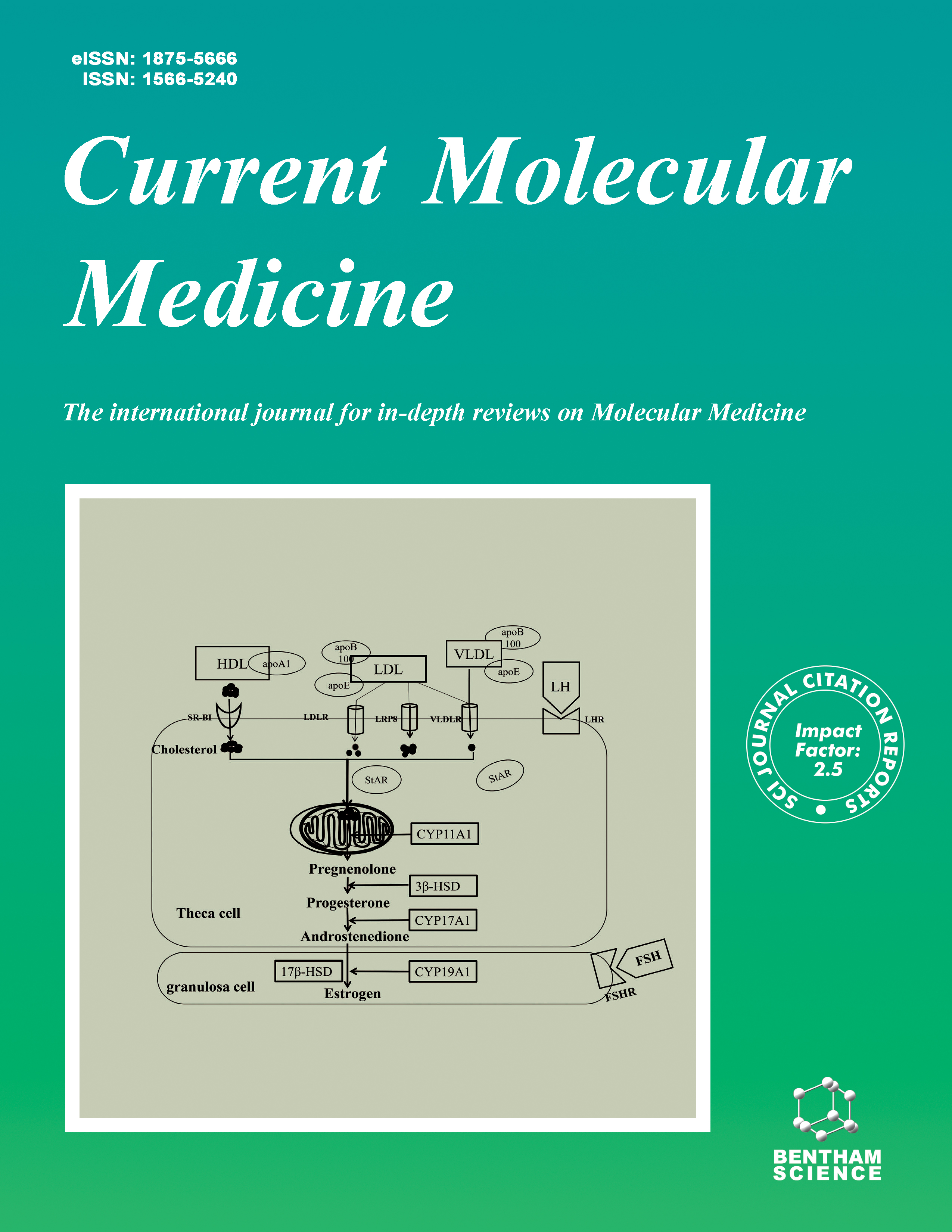- Home
- A-Z Publications
- Current Molecular Medicine
- Previous Issues
- Volume 3, Issue 7, 2003
Current Molecular Medicine - Volume 3, Issue 7, 2003
Volume 3, Issue 7, 2003
-
-
Preface
More LessCancer is a disease that has been in existence throughout the history of the human race. The term “carcinoma” was coined as early as in the fourth century B.C. Cancer is a unique and most feared malady that humankind has ever faced. At present, in technologically developed countries one out of every three individuals will be affected with cancer during his or her lifetime, and the prediction is that this may increase to o Read More
-
-
-
Genomic Instability and Cancer
More LessAuthors: George S. Charames and Bharati BapatTumorigenesis can be viewed as an imbalance between the mechanisms of cell-cycle control and mutation rates within the genes. Genomic instability is broadly classified into microsatellite instability (MIN) associated with mutator phenotype, and chromosome instability (CIN) recognized by gross chromosomal abnormalities. Three intracellular mechanisms are involved in DNA damage repair that leads to mutator phenoty Read More
-
-
-
Aberrant Regulation of Translation Initiation in Tumorigenesis
More LessAuthors: Mark Stoneley and Anne E. WillisAltering the rate of translation initiation of a specific gene can tightly regulate the synthesis of the corresponding polypeptide and is an important mechanism in the control of gene expression. For some time it has been known that many genes involved in cell proliferation, cell growth and apoptosis have atypical 5' untranslated regions (UTRs) containing a high degree of RNA secondary structure, upstream open reading fra Read More
-
-
-
The Quest for a Tumor Suppressor Gene Phenotype
More LessAuthors: Nadege Presneau, Emily N. Manderson and Patricia N. ToninOur current definitions of the tumor suppressor gene (TSG) have been guided by the identification of the prototypical gene, RB1, a TSG that is implicated in the development of both the inherited and sporadic forms of retinoblastoma. The hallmark feature of this TSG is loss of function in tumoral cells, which can be restored by reintroduction of a normally functioning protein with concomitant reversion of tumorigenicity. Ke Read More
-
-
-
The Role of Apoptosis in Tumor Progression and Metastasis
More LessAuthors: Jason L. Townson, George N. Naumov and Ann F. ChambersMetastasis, the process by which cancer spreads from a primary to a secondary site, is responsible for the majority of cancer related deaths. Yet despite the detrimental effects of metastasis, it is an extremely inefficient process by which very few of the cells that leave the primary tumor give rise to secondary tumors. Metastasis can be considered as a series of sequential steps that begins with a cell leaving a primary tumor, a Read More
-
-
-
Fundamental Concepts of the Angiogenic Process
More LessThe process of angiogenesis encompasses the growth and regression of capillary blood vessels. Angiogenesis is finely regulated at the molecular and genetic levels, not unlike other physiologic processes such as coagulation, glucose metabolism, and blood pressure. During the development of the field of angiogenesis research over the past three decades, fundamental concepts have been introduced along the way in an attem Read More
-
-
-
Role of Maspin in Tumor Metastasis and Angiogenesis
More LessAuthors: Jeremy S. Schaefer and Ming ZhangCancer is one of the leading causes of mortality in developed countries such as the USA. In 1998, there were more than 280,000 and 250,000 cancer related deaths in males and females, respectively. In males, lung and prostate cancers accounted for almost half of these deaths, whereas in females, lung and breast cancers were the leading causes of cancer mortalities. Therefore, the study of cancer has been of the utmo Read More
-
-
-
Molecular Mechanisms of Tumor Invasion and Metastasis: An Integrated View
More LessAuthors: R. A. Cairns, R. Khokha and R. P. HillAs tumors progress to increased malignancy, cells within them develop the ability to invade into surrounding normal tissues and through tissue boundaries to form new growths (metastases) at sites distinct from the primary tumor. The molecular mechanisms involved in this process are incompletely understood but those associated with cell-cell and cell-matrix adhesion, with the degradation of extracellular matrix, and w Read More
-
Volumes & issues
-
Volume 25 (2025)
-
Volume 24 (2024)
-
Volume 23 (2023)
-
Volume 22 (2022)
-
Volume 21 (2021)
-
Volume 20 (2020)
-
Volume 19 (2019)
-
Volume 18 (2018)
-
Volume 17 (2017)
-
Volume 16 (2016)
-
Volume 15 (2015)
-
Volume 14 (2014)
-
Volume 13 (2013)
-
Volume 12 (2012)
-
Volume 11 (2011)
-
Volume 10 (2010)
-
Volume 9 (2009)
-
Volume 8 (2008)
-
Volume 7 (2007)
-
Volume 6 (2006)
-
Volume 5 (2005)
-
Volume 4 (2004)
-
Volume 3 (2003)
-
Volume 2 (2002)
-
Volume 1 (2001)
Most Read This Month
Article
content/journals/cmm
Journal
10
5
false
en


